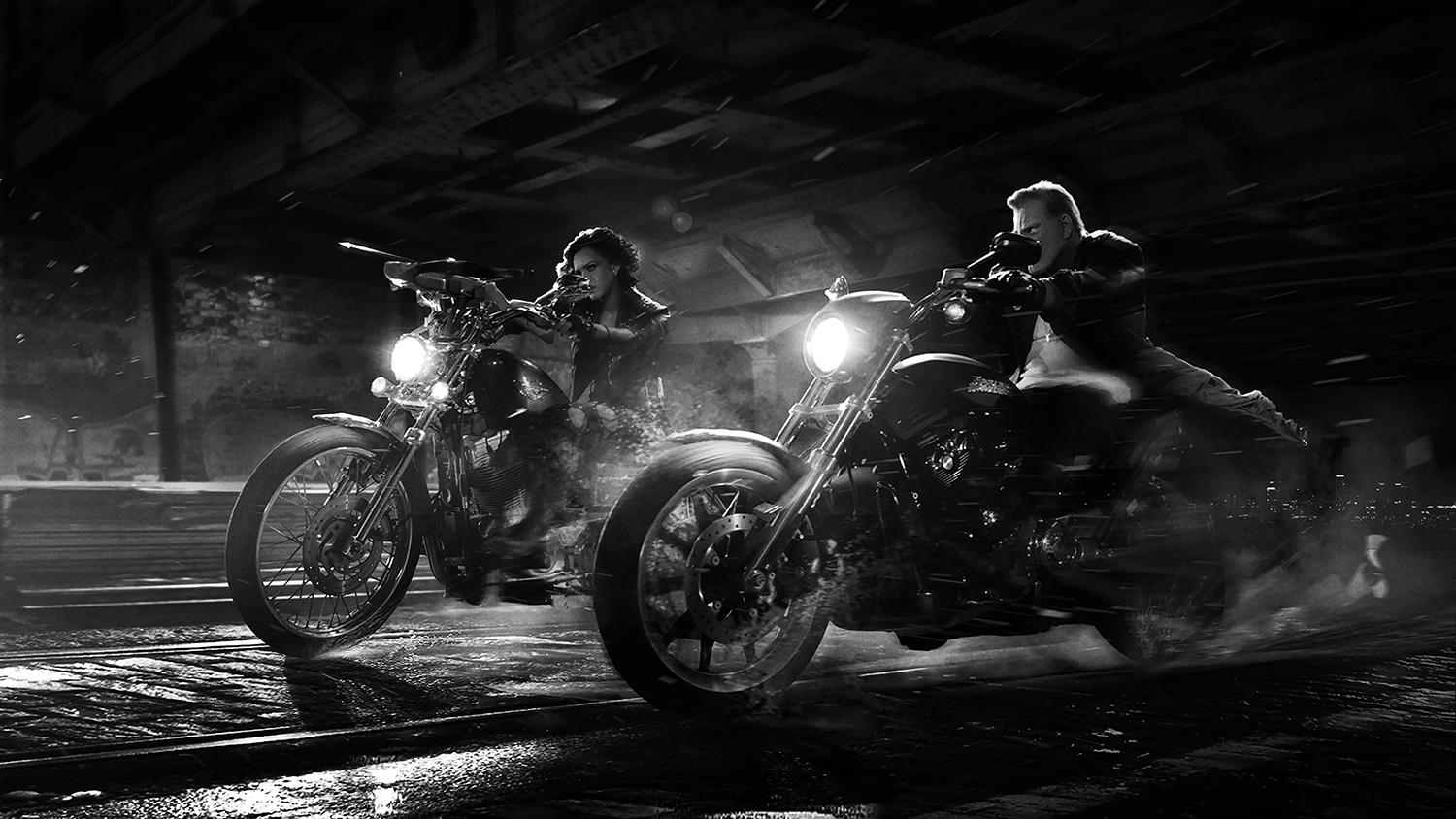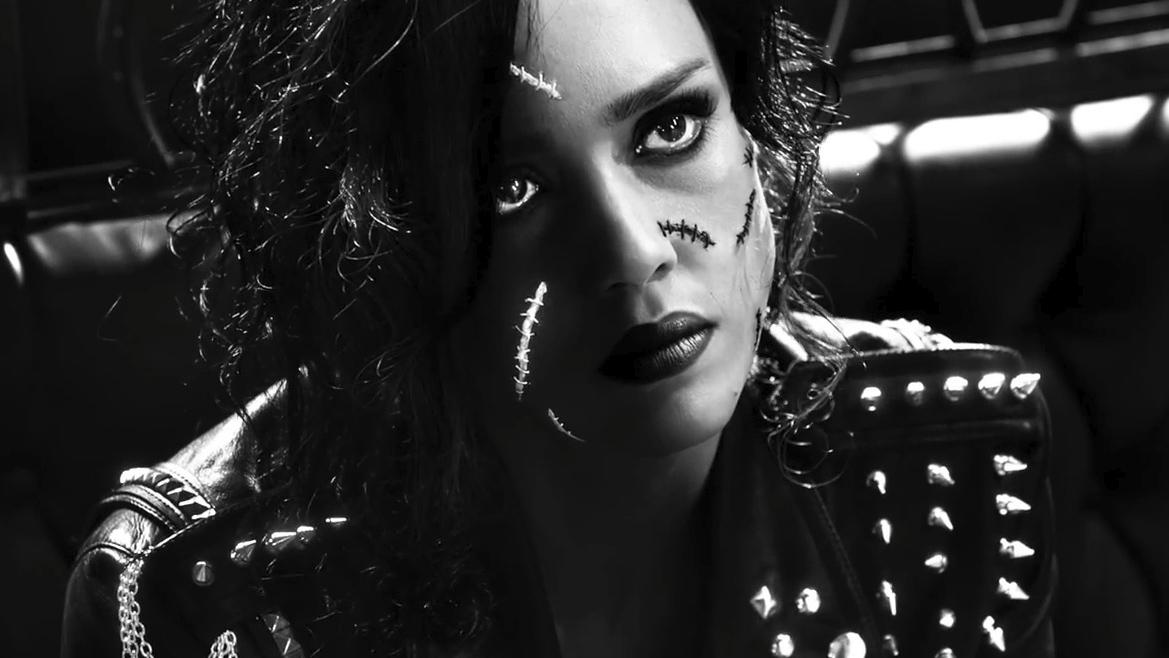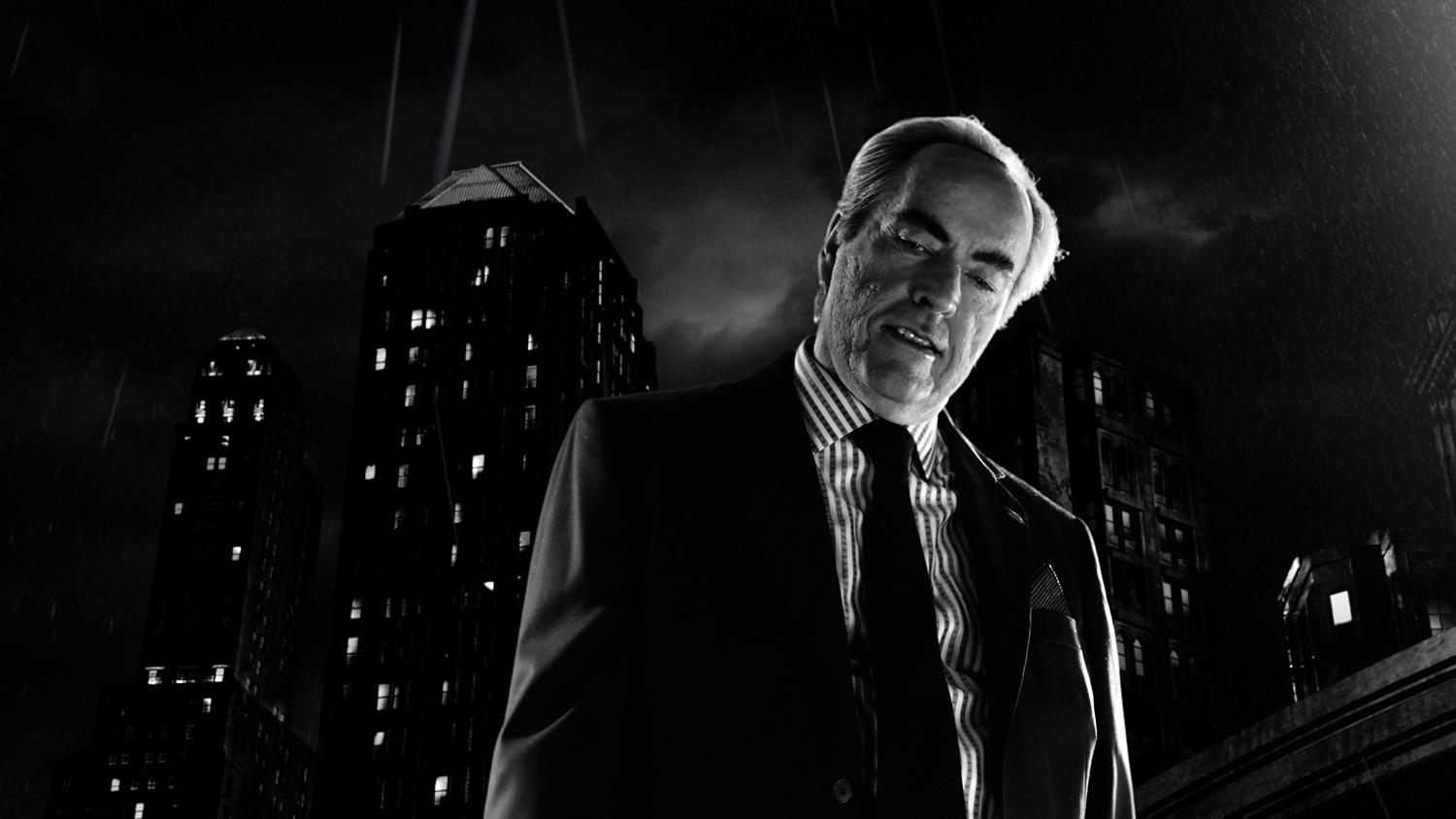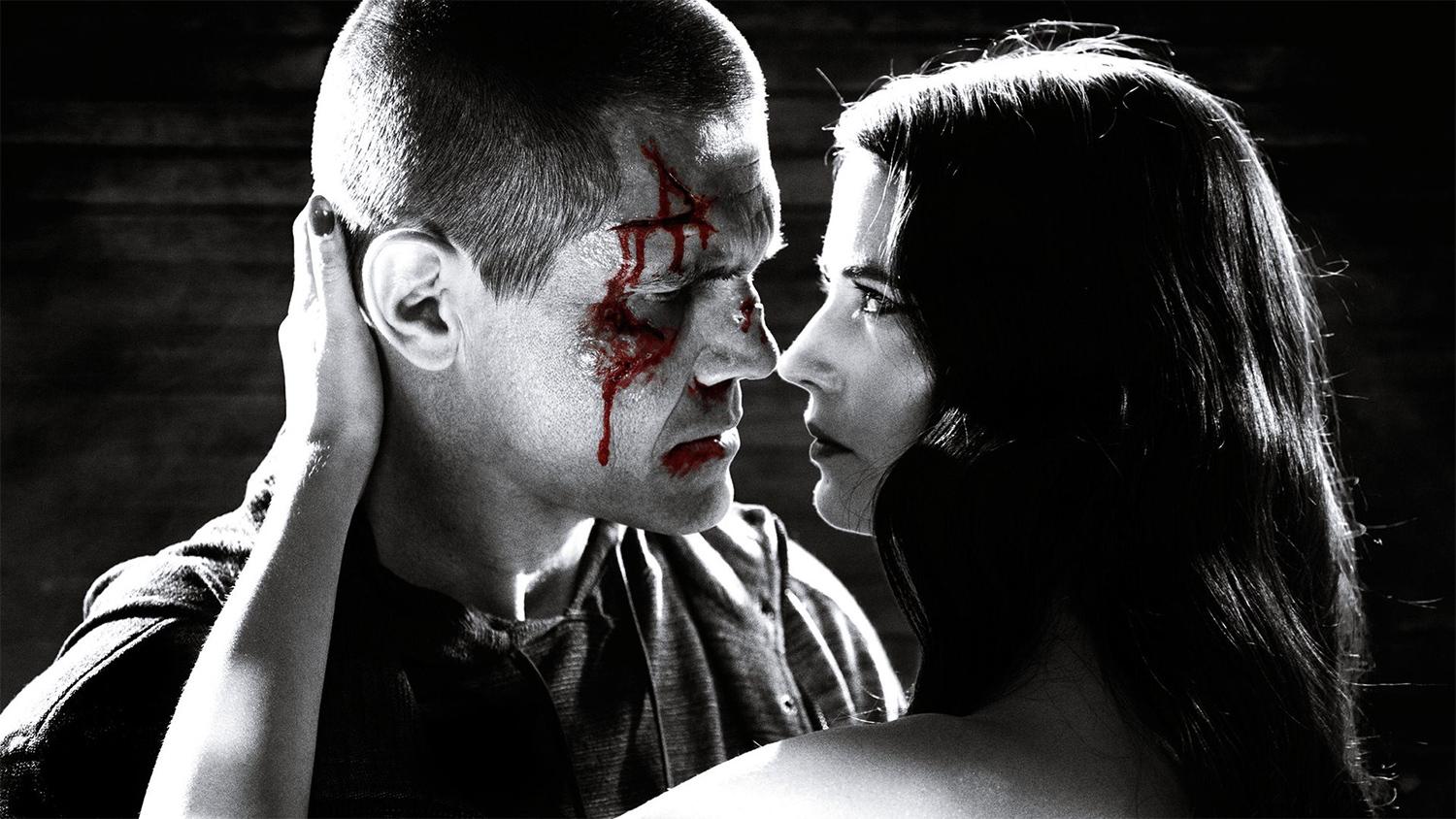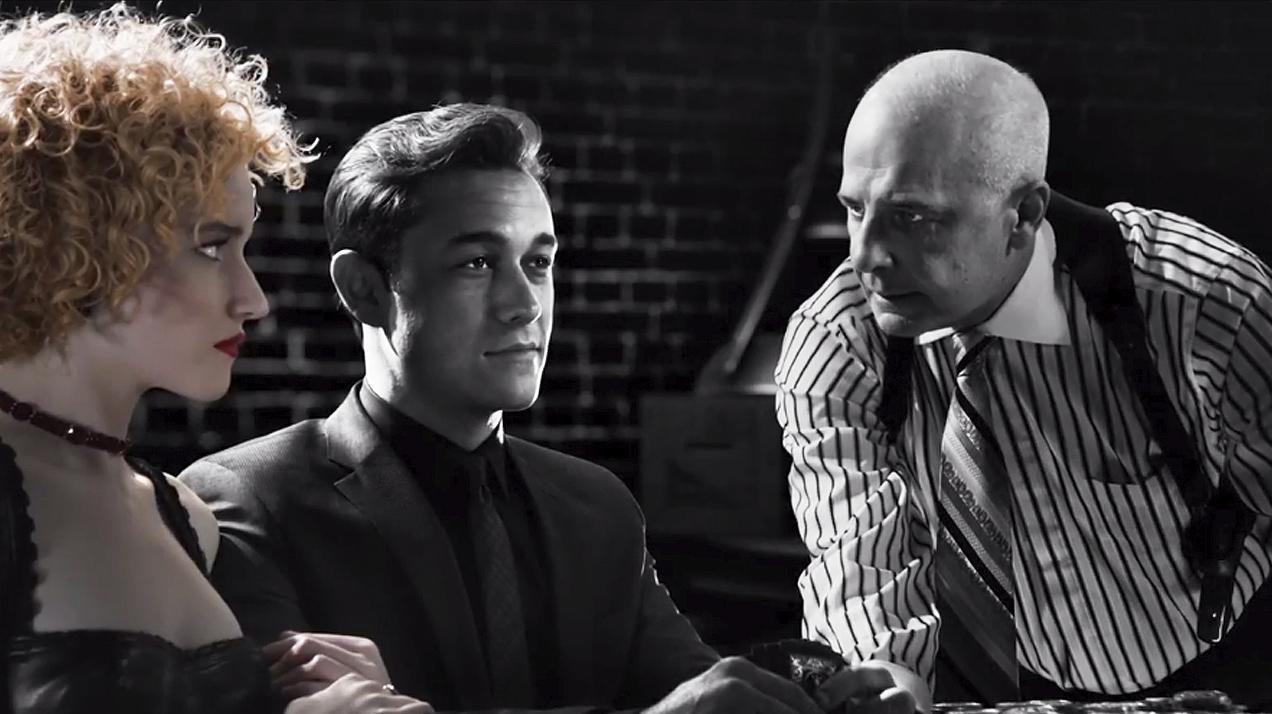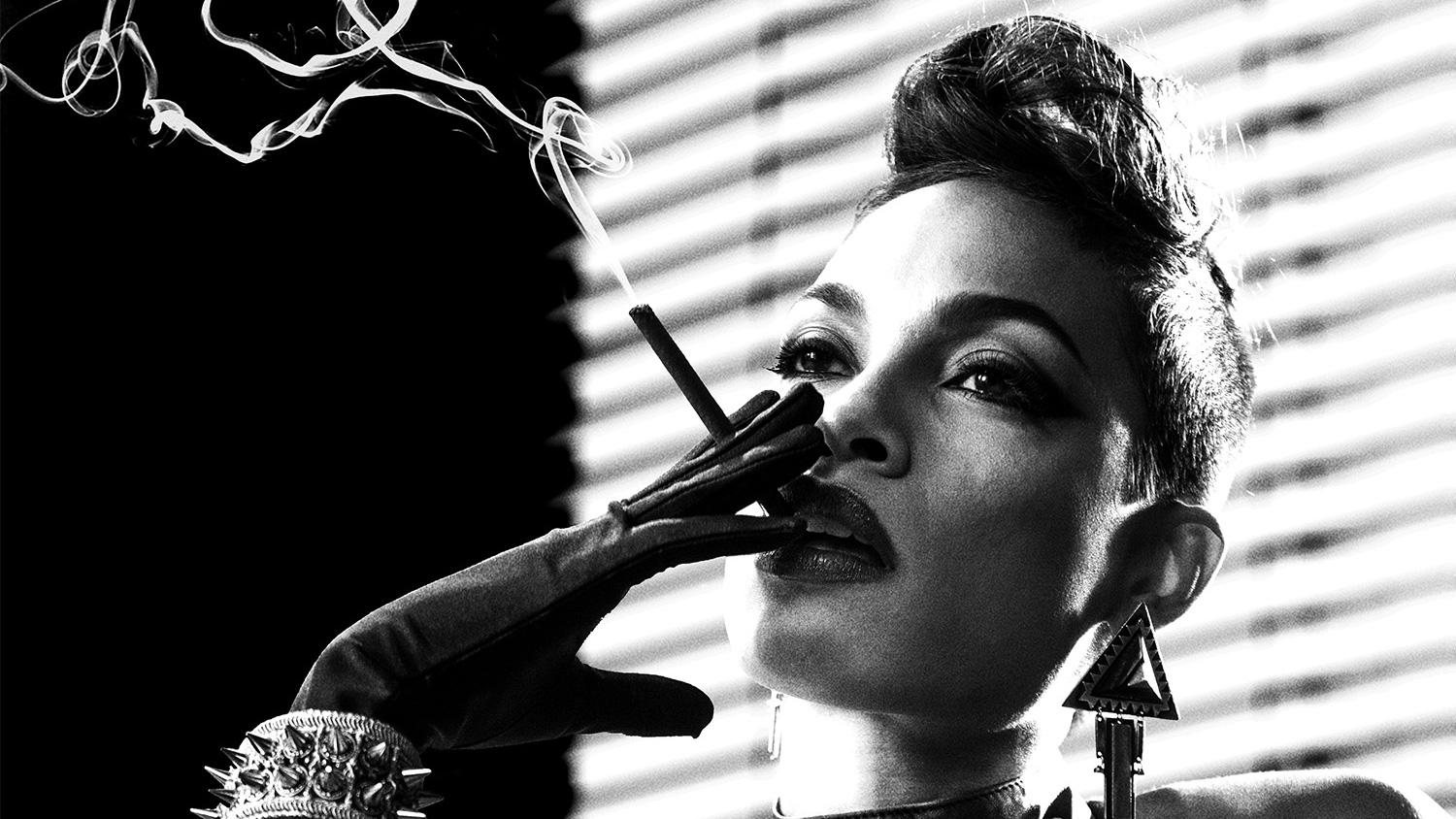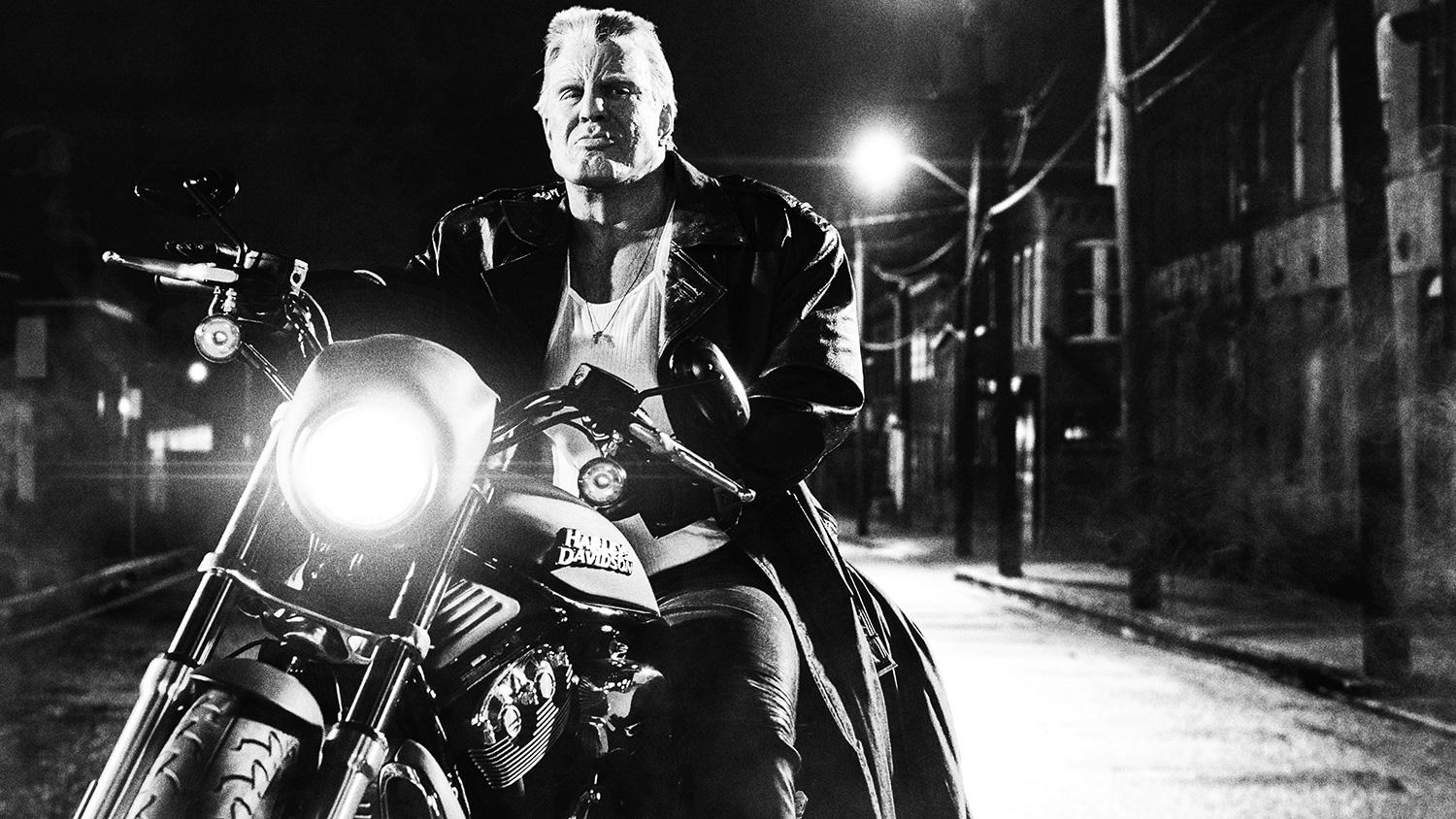Metal screams. Something hits me square in the chest. There’s no up or down. I don’t weigh a thing. I don’t remember a thing.
The familiar sounds of broken glass and Mickey Rourke’s growling voice welcome you right back to the world of Sin City, where trouble looks like Christmas, and one wrong turn gets you killed. Nearly 10 years after we last explored this crawling cesspool of booze, broads, and bullets, Frank Miller and Robert Rodriguez return with a sequel, Sin City: A Dame to Kill For — and it’s like they never left.
As with Sin City, Rodriguez and Miller’s Dame to Kill For takes on a multi-narrative structure, with several different stories at play. We begin with Marv (Rourke), who forgot to take his medicine again, waking up in the middle of a murder spree; just another Saturday night. Soon, focus shifts to Johnny (Joseph Gordon-Levitt), a cocky gambler pushing his luck against the most powerful man in town, Senator Roark (Powers Boothe). But there’s a queue for vengeance against Roark: Nancy (Jessica Alba), exotic dancer turned avenging angel, aims to take him down for the role he played in the death of her former flame, detective John Hartigan (Bruce Willis). Elsewhere, photographer Dwight McCarthy (Josh Brolin) drifts back into the orbit of the human black hole known as Ava Lord (Eva Green), a green-eyed goddess wearing damsel in distress camouflage.
These stories bob and weave in and out of each other, with characters from one yarn threading through to the next. Marv typically serves as connective tissue, less of a central figure this time around, and more the Sin City spirit animal: A towering, hulking mass of destruction, moldable for any murderous purpose, depending on the day. No one story stands out over the others. By and large, these are hollow tales of horror, with predictable twists at every turn. Expect shock and awe at all times. Betrayals are as common as breathing in Basin City. By now, you know what’s coming.
The familiar sounds of broken glass and Mickey Rourke’s growling voice welcome you right back to the world of Sin City.
Color earns its keep, but just as much kudos belongs to the sounds of Sin City — the cracking of finger bones, the bass-drum pounding of shotgun shells, the heavy humming of motorcycles, the juiciness of gunshot wounds, the water-balloon popping of heads. The voices, too, are undeniable. As the purring Senator Roark, Powers Boothe is a force of sinister seduction. As the growling Marv, Mickey Rourke becomes a powers booth of dim-witted destruction. Exaggerated performances are guaranteed elements of the Sin City package, voice work especially, contributing to an atmosphere unlike anything else at the movies.
The things that were great about Sin City are great in A Dame to Kill For, and the things that were bad about Sin City are bad in A Dame to Kill For. The stories are thin. The characters are thinner, even if the performances are thick. The men are macho-murder-sex machines. The women are naked-murder-sex machines. The sexualized world of Sin City wouldn’t be so bad if the men got their due, but their parts are completely ignored. It’s silly. At one point, Josh Brolin’s Dwight falls out a window, buck-naked — but shadowing makes him look penisless, like a gone-smooth vampire from The Strain. There are gratuitous sex scenes featuring Christopher Meloni, but the actor, famous for so many full-frontal appearances on HBO’s Oz, is never once allowed to hang free for all to see. Not even a cheek. Only the women, like Eva Green’s Ava Lord, are allowed to let their full flesh flow.

It’s as expected. It’s the world Frank Miller created in the comics so many years ago, and put on screen a decade ago. The warts remain. They’ve gone untreated.
In many ways, A Dame to Kill For is like rediscovering a treasured pair of shoes for the first time in 10 years. You slip them back on and remember why you bought them to begin with. The design. The color. The feel. Nostalgia settles in. But soon, so does the smell. The foul odor can be overpowering. And the structural flaws resurface. You remember that these shoes are two or three city blocks away from falling apart at the seams. So you have three choices: throw them away, walk them into the ground, or put them back in the closet. You’ll always have your memories, and you can move on without them. You can try to move on with them, but your feet will stink all the while. Or they can return to the closet, emerging every once in a while to be admired for their unique, resilient qualities, and shelved again before the smell becomes too much.
Much the same with Sin City: A Dame to Kill For. There’s a lot to like on the surface. There aren’t enough style points in the world to hand out. There’s something comfortable in the familiarity. But it presents problems that are big enough to consider throwing the whole thing in the bin. As with another comic book icon, Sin City: A Dame to Kill For is the best there is at what it does — and while what it does isn’t very nice, there’s beauty in its brutality, assuming you can stomach the stench.
Editors' Recommendations
- 20 years ago, Quentin Tarantino geeked out with Kill Bill
- The School for Good and Evil review: Middling magic
- Rosaline review: Kaitlyn Dever lifts up Hulu’s Romeo and Juliet rom-com riff
- Decision to Leave review: An achingly romantic noir thriller
- Operation Seawolf review: nice Nazis? No thanks!
